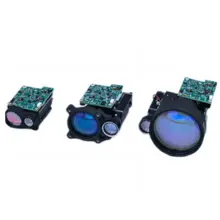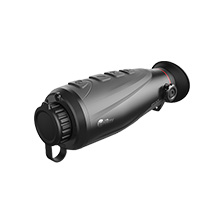FAQ: Everything You Need to Know about Thermal Camera

Thermal imaging camera is the non-contact device that detects infrared energy (heat) and converts it into a visual image. Let's dive into the science of thermal cameras and the invisible thermal world they let us see.
What’s thermal camera made of?
A thermal imaging camera consists of a lens, thermal sensor, processing electronics, and mechanical housing. The lens focuses the infrared energy onto the sensor. The sensor is available in various pixel configurations from 80 × 60 to 1920 × 1080 pixels.

Shot by InfiRay® Thermal Core
After years of R&D and innovation, InfiRay® has successfully increased the resolution of the thermal imaging camera lens to 1920*1080, which means that we can observe more and more detailed information through the infrared thermal imaging camera.
What can a thermal camera detect?
Thermal imaging cameras precisely measure the amount of heat sensed, enabling various applications. InfiRay® thermal imaging cameras can detect minute differences in heat (as small as 0.01°C) and display them as shades of gray or different colors.
Accurately Locate the Problems with InfiRay Thermal Imaging
The potential uses for thermal imaging cameras are almost limitless. Initially developed for surveillance, thermal imaging cameras are now widely used in building inspections (humidity, insulation, roofs, etc.), firefighting, autopilot, auto braking of cars, body temperature screening, industrial assessments, and scientific research wait.
Why ADAS and autonomous vehicles need infrared cameras?
With the in-depth development of intelligent cars, smart driving technology has gradually become the industry’s focus. At the end of 2021, on the live connection of the CEO Summit, Tesla CEO Elon Musk said: "The era of autonomous driving is coming, and it will become one of the biggest changes in the history of human civilization."
However, in recent years, traffic accidents related to "autonomous driving" have been frequently searched. The frequent occurrence of intelligent driving accidents reflects that the current smart assisted driving system, whether it is "purely visual" or "integrated perception,” has certain defects. Learn more about InfiRay® automotive thermal camera
InfiRay® infrared night vision camera for cars can help drivers perceive the road environment.
Therefore, infrared thermal imaging sensors that can significantly improve the safety of autonomous driving of smart cars in complex environments, such as insufficient light and harsh weather, will become the last piece of the puzzle for the protection of the smart driving industry.
InfiRay® cooperates with many excellent manufacturers to provide the highest quality thermal imaging sensor for global driving safety.
Why do thermal cameras work better at night?
Thermal imaging cameras work better at night, but this has nothing to do with how bright or dark your surroundings are.
Conversely, since the ambient temperature and the core temperature of unheated objects and the environment is almost always significantly lower at night than during daylight hours, thermal imaging sensors can highlight warmer areas and pedestrians.

See Through the Darkness with InfiRay Thermal Imaging Technology
For the same reason, most thermal cameras will show warmer objects with sharper contrast after night hours rather than after the sun has set.

















